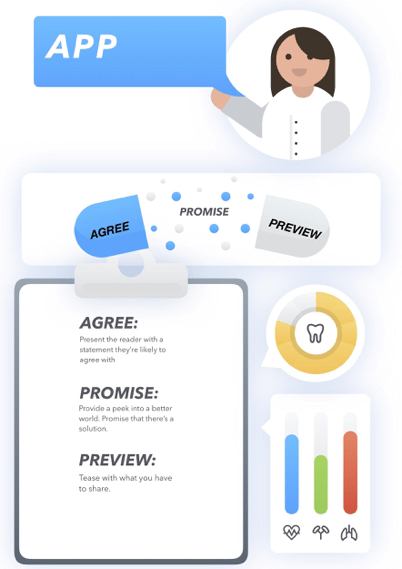5 SEO Trends for 2018 and Beyond

Do your SEO strategies fail to attract traffic like they used to? Perhaps you’ve slipped down the SERP, and you can’t work out why?
SEO trends have changed, and the last few years has seen some of the most significant shifts in the way that search engines assess your content.
Have you heard of Google Rank Brain? If not, you need to. We’re here to help you fill in the gaps in your understanding.
Keep up with the 5 SEO trends to adopt and nurture in 2018 and beyond.
Rank Brain is watching
Google Rank Brain is watching every interaction that takes place through the search engine. From the point at which a user initiates a search, Rank Brain observes behaviours and assesses a website’s usefulness against new criteria.
Rank Brain looks at the duration of a visit. If you’ve managed to attract a user to your site but fail to provide them with the information they were looking for, you’re likely to be demoted.
Rank Brain monitors and assesses UX (User Experience). Signals such as keywords and metadata help Google discover your page initially, but you must then engage and maintain visitors to positively affect your rating in the SERPs.
Great UX is rewarded with higher rankings in the SERPs. Poor UX is demoted.
The way in which you present your content, streamline the UX and keep your site up-to-date, really matters.
Keep Your Visitors
You’re on the clock: You have just 8 seconds to convince a user to stick around on your page.
If people are clicking, then immediately moving back to the search results page, something known as ‘pogo sticking’, it will affect your SEO ranking.
So how do we keep those visitors?
-
APP
APP means Agree, Promise, Preview. It’s your way of making sure that you keep your visitors (and hopefully convert them into customers).
This article used the APP formula in the introduction. If you’re still reading, it worked!
We opened with a couple of questions that we hope the reader is likely to agree with. (AGREE)
Moreover, we reinforced those questions with a whiff of insight. (PROMISE)
Finally, we gave a hint into what we’re going to explore (Rank Brain’s new criteria). (PREVIEW)

To maintain your reader’s attention use:
- Short sentences
- Short paragraphs
- Unintimidating text that looks friendly
There’s more.
-
Bucket Brigading
See what I did there? I ended that last section with a bucket brigade – a short paragraph that stands out from the rest of the text.
Look:
There’s another. A bucket brigade improves the ‘scannability’ of a document – highlighting salient points.
The deal –
Make your text easy to scan, and you’ll have more chance of maintaining the interaction. People often scan through an article before reading to make sure that it’s going to be worth the time commitment. And longer interactions help to elevate your ranking with Rank Brain.
-
Boost your speed
A significant factor affecting UX is site loading speed. Most sites are at the mercy of an external hosting service, but pressure from you will force them to improve.
But don’t change hosts quite yet!
There are practical ways that you can improve your site speed for yourself.
Test your site speed
Google Page Speed Insights (PSI) is a useful tool that assesses the quality of the code that drives your site. It suggests improvements, as well as an essential evaluation as to your site’s compatibility with mobile.
PSI gives you plenty of practical tips as to how you can optimize your content to ensure faster loading speeds.
Do whatever you can to streamline the running of your site.
Un-optimised images (jpg, gif, png, etc.) can adversely affect your site speed. Make sure they’re compressed to a stream-friendly bit-rate. If you run your own site, it’s easy to overlook appropriate image compression – but, thankfully, it’s simple to remedy.
Mobile First
According to statista.com, 52.2% of all web pages were served to a mobile device in 2018. And the preference for mobile is increasing exponentially year-on-year.
So, it’s no longer good enough just to offer a desktop site – you need to ensure that your site is mobile friendly.
If people are accessing your site over 4G, you have a responsibility to ensure that your site doesn’t eat data.
Optimizing your images and removing duplicate content is the primary trend for 2018 mobile sites.
-
Assess your current SEO acumen
Although UX is a considerable driver for Rank Brain’s assessment for SERP positioning, you shouldn’t neglect the old-school. There are lots of useful tools to help ascertain your current SEO status.
Google Search Console is very useful, for example, identifying the keywords that rank most highly on your site, or any indexing issues and its free! However, ahrefs is an excellent paid alternative.
-
Focus on your content
Quality is king. Keyword-specific copy and sharply-tuned metadata make your content more discoverable, but Google is looking for content that is beneficial, authoritative, and trustworthy.
Google wants to find the optimal result for a given keyword, but they also want to send users to the site that offers the best, proven UX.
Engage
Marketing professor, Dr Jonah Berger, conducted a study back in 2012, exploring what makes a piece of content go viral. He identified that “highly actionable” content was most likely to receive social shares and backlinks.
Actionable?
Long-form content will keep a reader on your page for longer. But, of course, it has to be content that engages the reader.
These techniques are proven to engage:
- Short paragraphs
- Bucket brigades
- Infographics
- Striking visuals
- APP
The average word count of the most successful articles identified by Berger was 1890 words. Not 500 words. If you want to keep users on your page, you need to make it worth the visit. And 500 words typically won’t keep them there for long enough.
These techniques will help your SEO:
- Your first 100 words – This might be teaching your grandmother to suck eggs, but including your primary target keyword within your first 100 words will optimize your copy.
- Shorter URLs for blogs – Most blog sites offer the opportunity to shorten the URL of your blog. It’s worth doing if you intend to share your blog on social media. Minimising the characters makes it easier for a user to find, and takes up fewer characters of your Tweet.
- Link – Google looks for content with well-rounded, researched copy. Outbound linking helps give an authoritative tone. Pages that use outbound linking out-perform those that don’t.
Rank Brain is intelligent – it monitors more than just keyword density and metadata, so it’s time to up your SEO game.
Boost your speed, optimize your content, and assess how your site is currently performing. Make your site mobile friendly – and ensure that images are compressed so that they load quickly.
